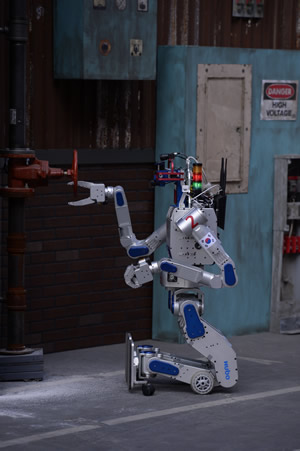
Nearly two dozen robots competed head-to-head on a course designed to replicate rescue efforts amid disaster conditions during the Defense Advanced Research Projects Agency's Robotics Challenge held June 5 and 6 in Pomona, Calif. At stake: $3.5 million in prize money.
Taking the $2 million first place prize was Team Kaist of Daejeon, Republic of Korea, and their robot DRC-Hubo. Earning the $1 million second place prize was Team IHMC Robotics of Pensacola, Fla., and their robot Running Man. And taking home $500,000 for third place was Tartan Rescue of Pittsburgh, and their robot CHIMP.
DARPA launched the competition in 2012 "in response to a humanitarian need that became glaringly clear during the nuclear disaster at Fukushima, Japan, in 2011," according to a news release about the event issued by the federal agency. The goal was to accelerate progress in robotics and hasten the day when robots have sufficient dexterity and robustness to enter areas too dangerous for humans and mitigate the impacts of natural or man-made disasters.
Gill Pratt, DARPA program manager and DRC organizer, thanked all 23 participating teams for helping to open a new era of partnership between robots and humans.
"These robots are big and made of lots of metal, and you might assume people seeing them would be filled with fear and anxiety," Pratt said. "But we heard groans of sympathy when those robots fell. And what did people do every time a robot scored a point? They cheered! It's an extraordinary thing, and I think this is one of the biggest lessons from DRC—the potential for robots not only to perform technical tasks for us, but to help connect people to one another."
Related Glossary Terms
- robotics
robotics
Discipline involving self-actuating and self-operating devices. Robots frequently imitate human capabilities, including the ability to manipulate physical objects while evaluating and reacting appropriately to various stimuli. See industrial robot; robot.







